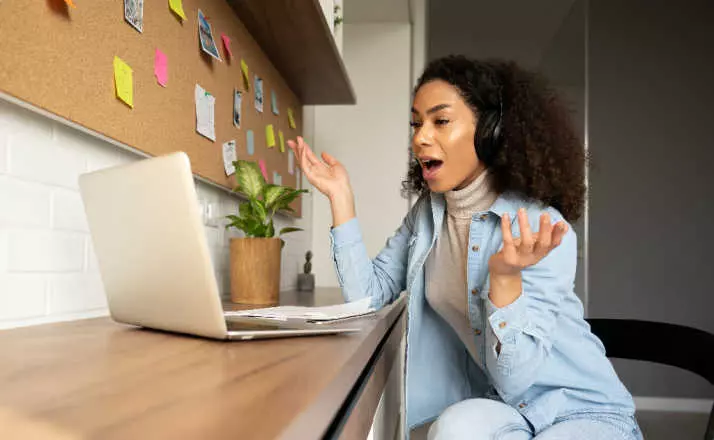As both a parent of a child in elementary school and a teacher myself, the beginning of a new school year is always filled with questions.
What will my classes be like? Will my daughter like her new teacher?
Did I remember each important detail on my syllabi, as well as every item on my daughter’s back to school supply list?
Even in a “normal” school year there’s so much to consider that it can easily become overwhelming for parents and students alike.
2020, though, has been fraught with so much uncertainty and a “new normal” that none of us could have ever anticipated.
We are nervous and frightened more than ever.
Understandably, parents have a lot of very valid and important questions about our children’s education.
Where I live, like many other places in the U.S., school cannot safely be held in-person right now.
All learning is virtual, at least for the time being, and people who care for children of all ages are worried that the quality of online school will lag far behind the in-person instruction we once took for granted. They are scared that kids aren’t truly being educated if they are in front of a screen.
As a teacher, I am here to let parents know that we got this.
First, I want to be clear that every single question and concern that people have about online schooling is one hundred percent valid.
This option is devastating for some kids with special needs, and children from homes with abuse and neglect. I never want to discount that.
Online schooling is also profoundly difficult in homes where parents have no choice but to work outside of the house.
That said, it is also really tough for parents who have to work inside the home.
I know, because I am one of them. I teach my classes on a computer in one room, while my daughter attends her classes on a computer in another room.
Teachers know that children need socialization, human touch, and play time.
They need to learn problem solving on the playground, and they should be goofing off in the cafeteria, and getting their sillies out in gym class. Tragically, this isn’t an option in a lot of places now.
I can’t make parents feel better about this. I’m upset about the situation too.
Some things are simply beyond our control, but not everything.
Some factors we can control.
Teachers have a handle on the situation, and we have your children’s best interests at heart.
In fact, making sure those kids are as okay as possible is our singular goal.
Back in March, we weren’t so prepared.
The lockdown was sudden, unexpected, and unprecedented. I was terrified, and had one week to switch 120 students from a tradition face to face classroom to an online setting.
I had zero experience teaching online, and had no idea what Zoom even was.
At the same time, it was a challenge — an occasion to rise to.
Until school ended in May, I did my best, burdened with guilt the entire time that I was just barely scraping by.
Frustrated daily, I knew I could do better and when my final grades were turned in and I had a moment to clear my head, I vowed to do better.
So did teachers everywhere.
Over the summer teachers got to work.
Many of our schools offered us valuable training seminars, but those weren’t enough.
Every single teacher I know, including myself, sought out even more online classes and workshops about online teaching and technology.
We devoured any content we could get our hands on about how to make distance learning an engaging, inspiring experience.
All summer we read, watched videos, made notes.
We set up practice Zoom calls with one another to test out ideas.

For the past three months instructors everywhere have devoted our lives to mastering virtual pedagogy.
We planned lessons, shared ideas, made Facebook groups and Pinterest boards, and we did everything on our own time without getting paid for it.
For me, this learning breathed new life into how I approached my classes.
I hadn’t felt this passionate and excited since I was in college.
The circumstances sucked, but I, along with teachers everywhere, was on a mission. We couldn’t let these kids down, and we wouldn’t.
Luckily, I had signed up to teach two summer school classes with a total of about 60 students. There I got to try out my new skills, and I’m pleased to report I had great success.
Students were learning and engaging with the material. They liked the technology and the flexibility it offered.
Students were more open to learning when they were comfortable and safe at home.
My confidence as a teacher was boosted from my research and practice, and it showed.
I was able to offer my students all the materials and activities we cherished from my in-person classroom, only in fun new ways.
Assessments and feedback proved that not only were these kids showing up and learning, but that they were doing better than they had in the traditional setting. It was amazing!
Shy kids suddenly participated.
Students could review the materials better because classes were recorded for them.
They loved asking questions via chat and having my answers in writing.
Zoom office hours allowed me to communicate and reach struggling students in a more tangible way.
Neat new technology features allowed students more room for imagination, and lots of them created unique, multi-media assignments, the possibilities of which hadn’t occurred to them before.
Distance learning opened up new opportunities and redefined the boundaries of what education can mean, and that’s a great thing.
Sometimes we find ourselves in situations that we did not sign up for.
I never imagined I would be teaching from a corner of my living room, but we have to make the best of things.
Teachers this summer understood that we needed to model resilience, flexibility, and creative problem-solving to our students in a time of strife, and now that’s school’s starting, we’re doing it.
Like parents, we know kids are suffering and we want to be our absolute best for them.
Last winter, everyone was caught off guard, but now at the beginning of a new school year, we’ve had months to prepare.
We educators want parents to know that we won’t let them down. This isn’t easy for anyone, but we’re going to get through it together.











